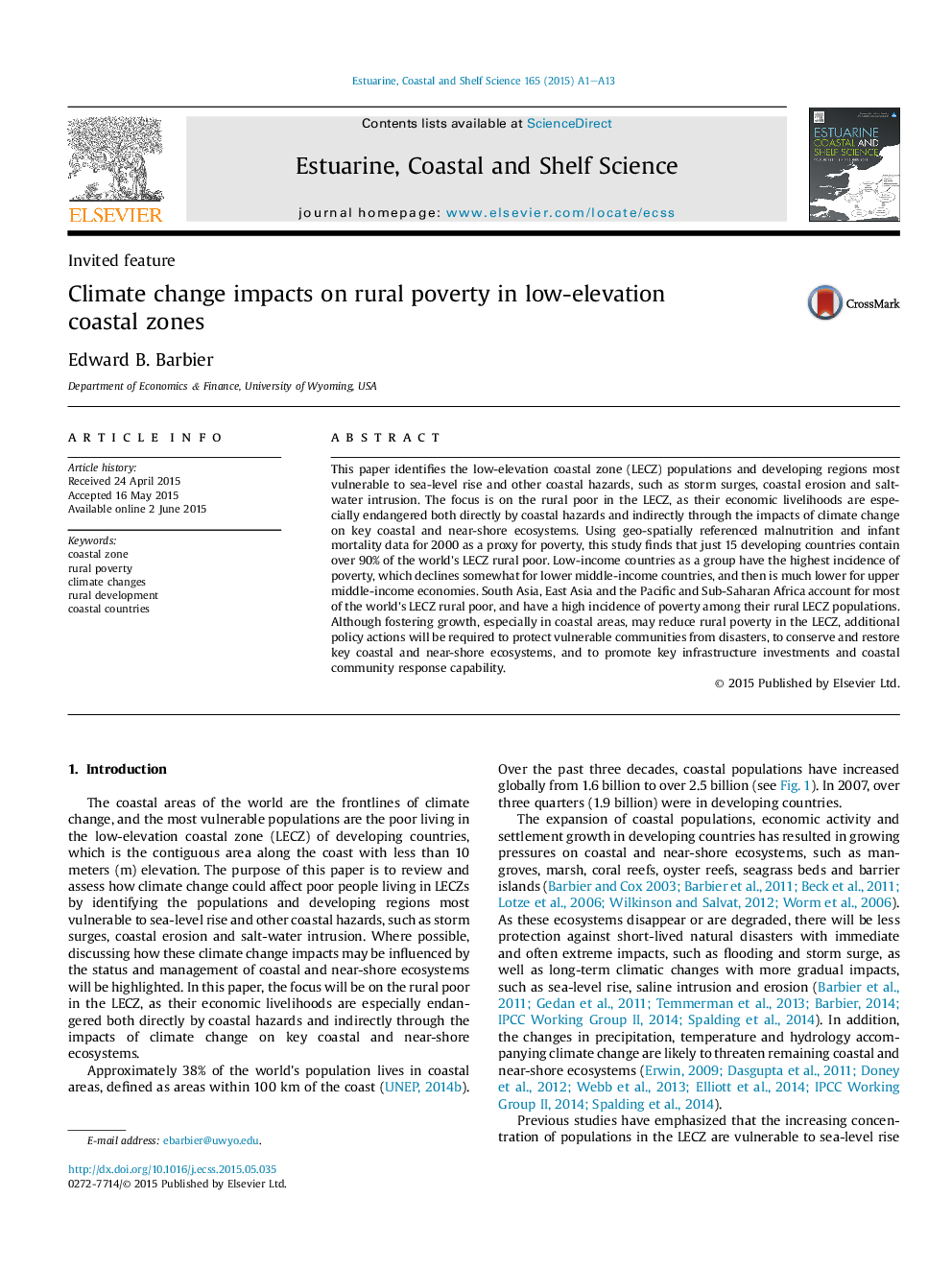| Article ID | Journal | Published Year | Pages | File Type |
|---|---|---|---|---|
| 6384600 | Estuarine, Coastal and Shelf Science | 2015 | 13 Pages |
This paper identifies the low-elevation coastal zone (LECZ) populations and developing regions most vulnerable to sea-level rise and other coastal hazards, such as storm surges, coastal erosion and salt-water intrusion. The focus is on the rural poor in the LECZ, as their economic livelihoods are especially endangered both directly by coastal hazards and indirectly through the impacts of climate change on key coastal and near-shore ecosystems. Using geo-spatially referenced malnutrition and infant mortality data for 2000 as a proxy for poverty, this study finds that just 15 developing countries contain over 90% of the world's LECZ rural poor. Low-income countries as a group have the highest incidence of poverty, which declines somewhat for lower middle-income countries, and then is much lower for upper middle-income economies. South Asia, East Asia and the Pacific and Sub-Saharan Africa account for most of the world's LECZ rural poor, and have a high incidence of poverty among their rural LECZ populations. Although fostering growth, especially in coastal areas, may reduce rural poverty in the LECZ, additional policy actions will be required to protect vulnerable communities from disasters, to conserve and restore key coastal and near-shore ecosystems, and to promote key infrastructure investments and coastal community response capability.
Graphical abstractThe vulnerability of poor rural households and their livelihoods in the low-elevation coastal zones to climate change impacts.Download high-res image (128KB)Download full-size image
